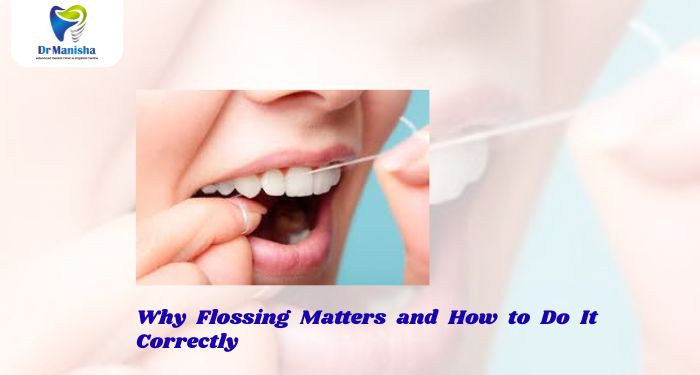Brushing your teeth twice a day is a great habit, but if you’re not flossing, you’re missing a crucial step in your oral care routine. Many people believe brushing alone is enough, but dental experts emphasize that flossing is equally important to maintain healthy teeth and gums.
Flossing doesn’t just remove food particles—it helps prevent plaque buildup, cavities, and gum disease. Let’s dive into why flossing matters, how to do it correctly, and some frequently asked questions about this essential habit.
Why Flossing Matters
1. Removes Plaque and Food Particles
Your toothbrush can’t reach the tight spaces between teeth where food often gets stuck. Over time, these particles lead to plaque buildup, which can cause tooth decay and gum inflammation. Flossing cleans these hidden areas effectively.
2. Prevents Gum Disease
Plaque buildup around the gumline can lead to gingivitis, the earliest stage of gum disease. If left untreated, it can progress to periodontitis, which may cause gum recession, tooth loss, and even impact overall health. Flossing daily reduces this risk significantly.
3. Reduces Bad Breath
Food trapped between teeth begins to break down, releasing unpleasant odors. Flossing removes this debris, keeping your breath fresh.
4. Protects Overall Health
Studies show that poor oral hygiene is linked to conditions like heart disease and diabetes. Since gum disease allows harmful bacteria to enter the bloodstream, flossing plays a role in maintaining not just oral health but overall well-being.
How to Floss Correctly
Flossing may seem simple, but doing it incorrectly can hurt your gums or make it less effective. Here’s the right technique:
-
Take the Right Length: Break off about 18–24 inches of dental floss. Wrap most of it around one middle finger and the rest around the opposite finger.
-
Hold the Floss Properly: Use your thumbs and forefingers to hold the floss tightly.
-
Gently Guide Between Teeth: Slide the floss gently between your teeth using a back-and-forth motion. Never snap it forcefully, as this can damage your gums.
-
Form a C-Shape: Curve the floss around each tooth in a “C” shape and slide it under the gumline to remove plaque.
-
Use Clean Sections: Move to a fresh part of the floss as you go from tooth to tooth.
-
Be Consistent: Floss once daily, ideally before brushing at night, for best results.
Flossing Alternatives
If traditional string floss feels difficult, consider alternatives:
-
Floss Picks: Convenient for on-the-go cleaning.
-
Water Flossers: Use a stream of water to remove plaque and debris.
-
Interdental Brushes: Small brushes that fit between teeth, effective for people with wider gaps or braces.
The best flossing method is the one you can do consistently and comfortably.
Conclusion
Flossing is more than just an extra step—it’s a cornerstone of good oral hygiene. By removing plaque, preventing gum disease, and reducing bad breath, flossing ensures a healthier smile and better overall health. When done correctly and consistently, it’s one of the simplest yet most powerful habits you can adopt.
If you struggle with flossing or experience persistent gum issues, consult your dentist for personalized advice. Remember, a few minutes spent flossing each day can save you from costly and painful dental treatments in the future.
FAQs About Flossing
1. How often should I floss?
Dentists recommend flossing at least once a day to maintain healthy gums and prevent plaque buildup.
2. Should I floss before or after brushing?
It’s best to floss before brushing. This helps remove debris and allows fluoride from your toothpaste to reach between your teeth more effectively.
3. My gums bleed when I floss. Should I stop?
Mild bleeding is common if you haven’t flossed regularly. It usually stops after a week of consistent flossing. If bleeding persists, consult your dentist—it may be a sign of gum disease.
4. Can flossing damage my gums?
Flossing incorrectly (snapping or forcing it) can irritate gums. Gentle, proper technique ensures safety and effectiveness.
5. Is mouthwash a substitute for flossing?
No. Mouthwash can reduce bacteria but doesn’t physically remove food particles and plaque between teeth. Flossing is still necessary.

